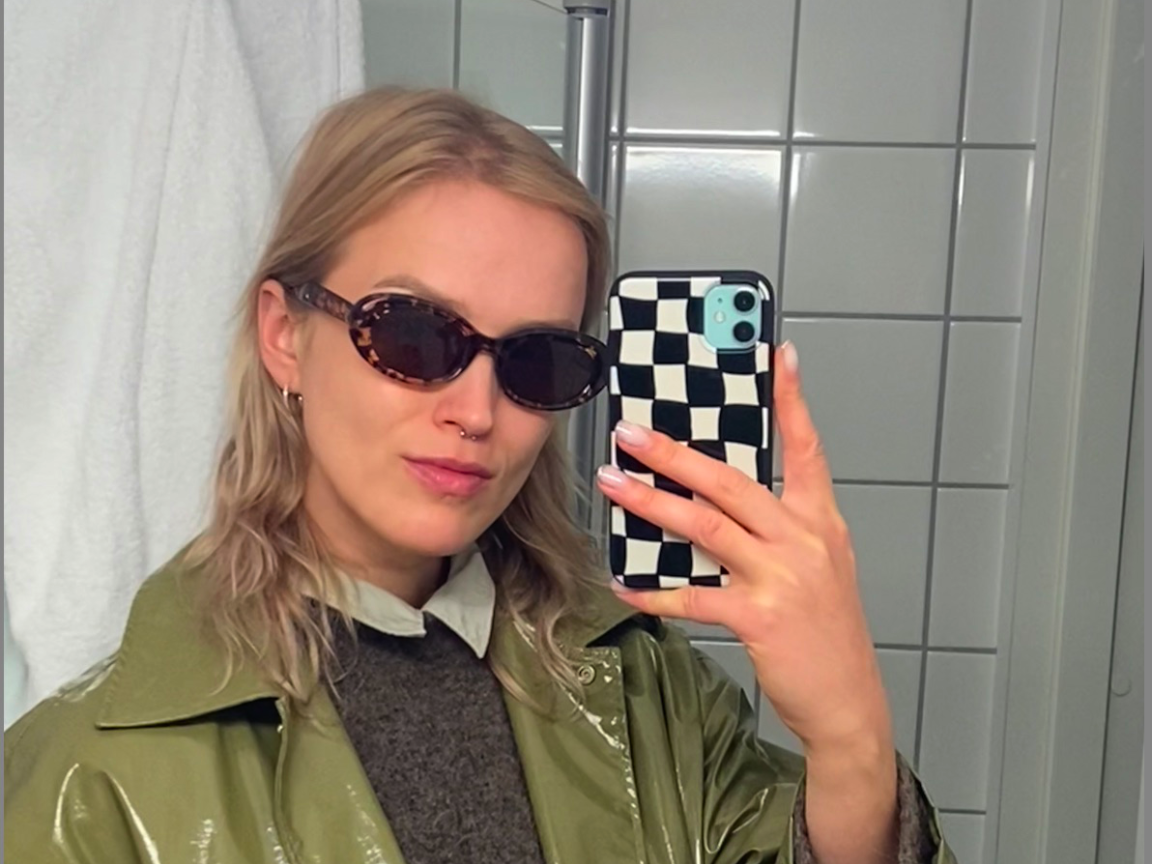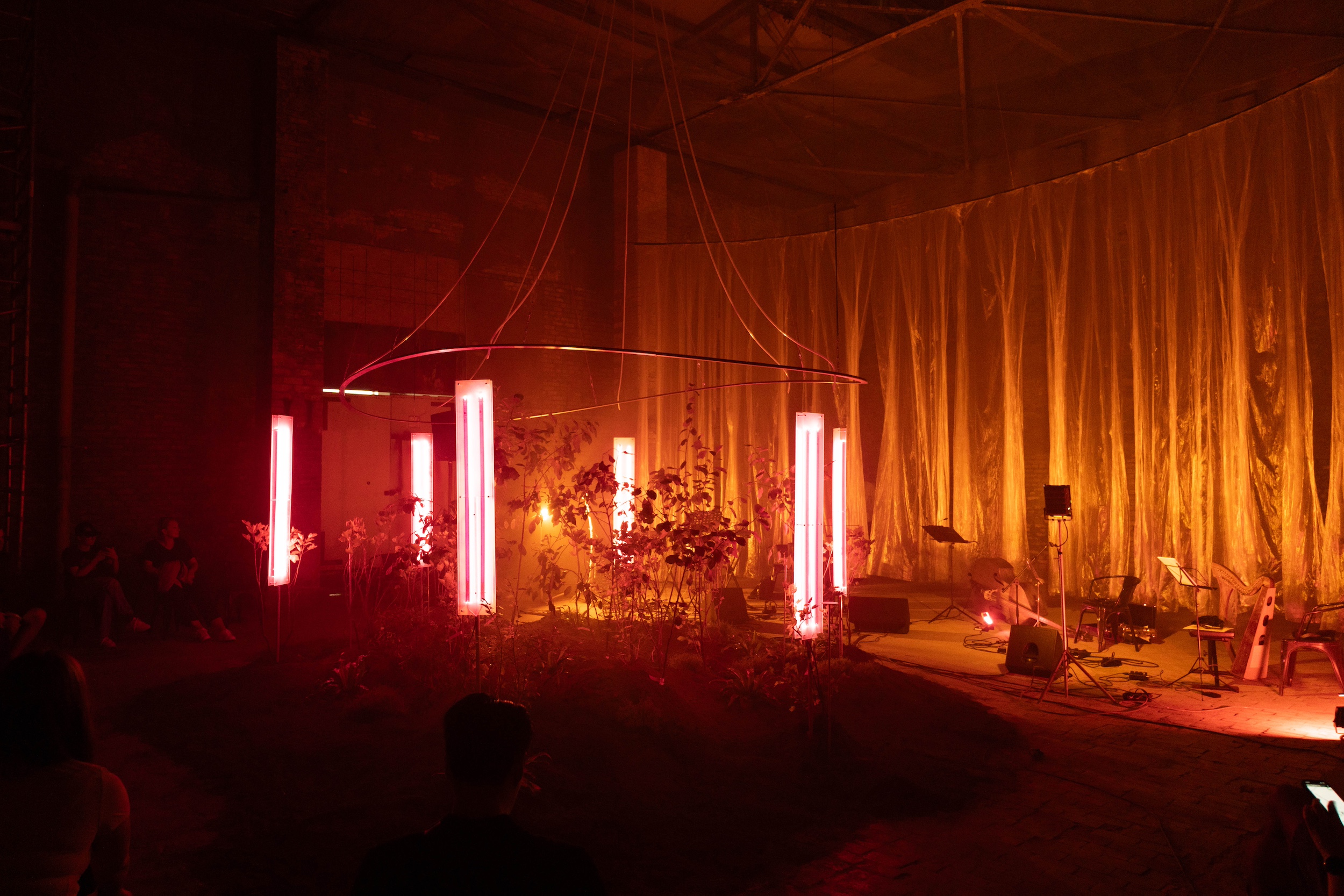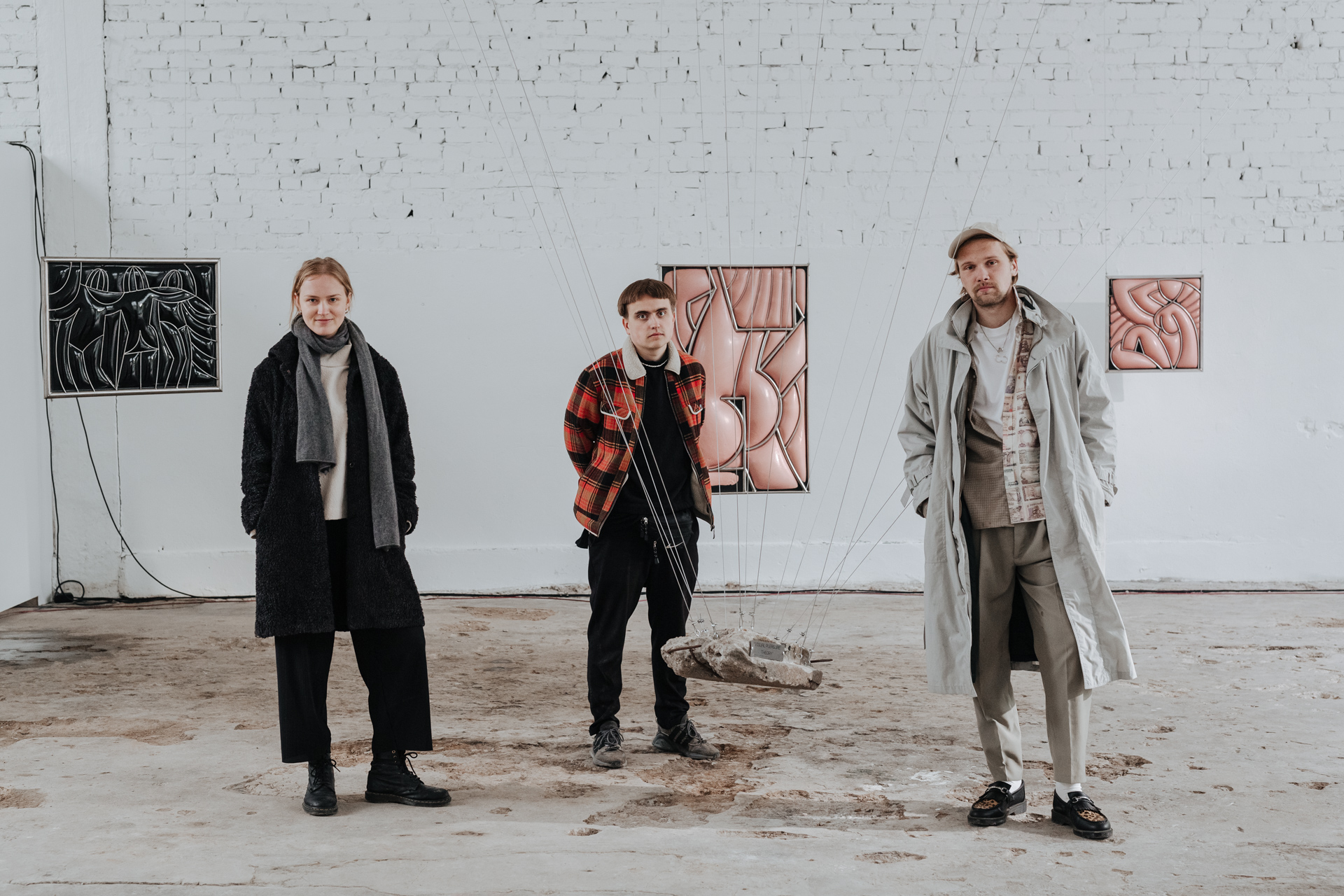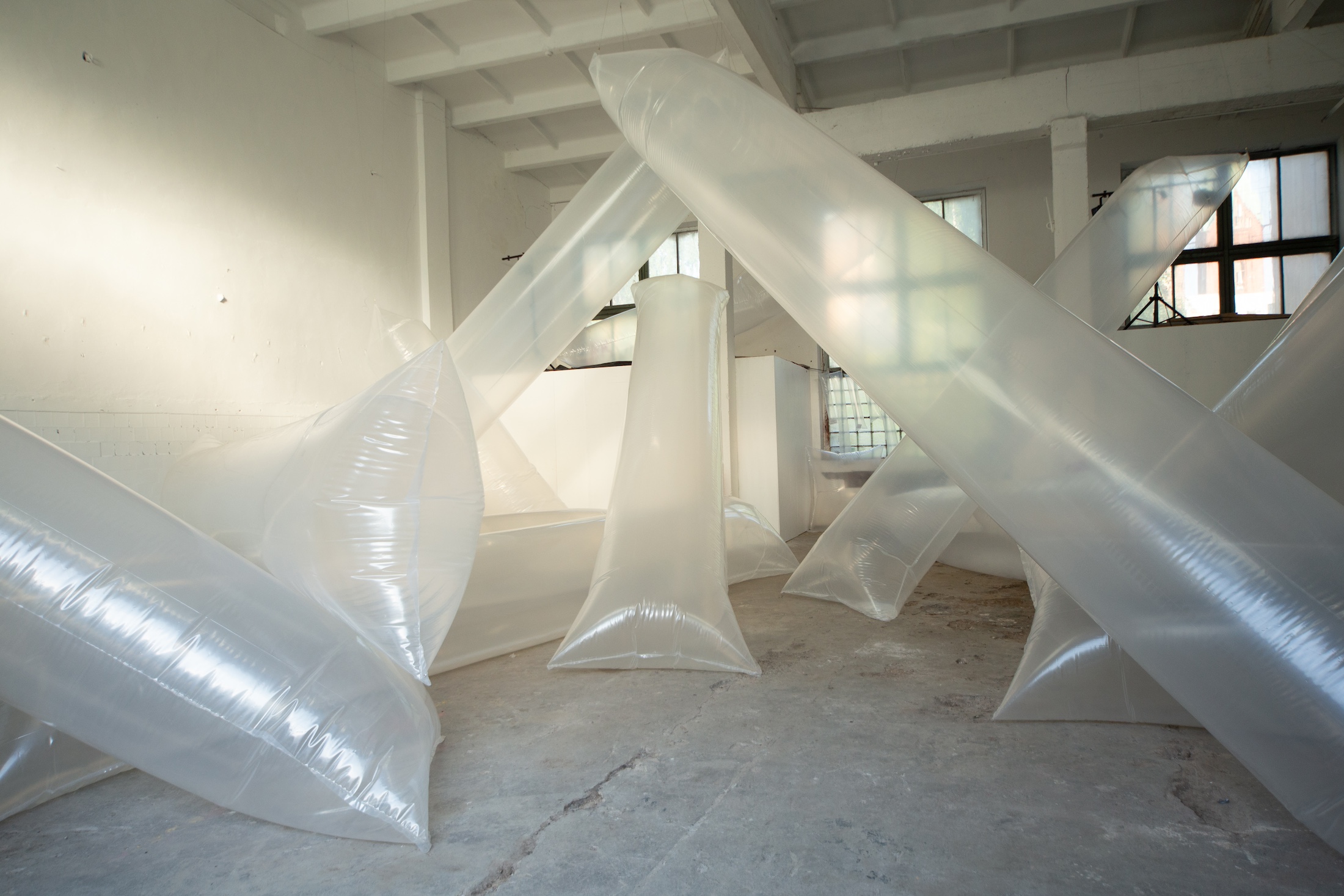
CFC Members Spotlight: Tīna Pētersone
#CFC Members Program #Members #Tina PetersoneCFC Members Spotlight is a bi-monthly interview series showcasing the work of our members on our blog and social media. Through this feature, we highlight the diverse curatorial practices in our community and encourage new connections and exchange.
Meet CFC Member Tīna Pētersone
Tīna Pētersone is an independent curator from Riga with an MFA in Curating from Goldsmiths, University of London. She has co-founded two art spaces and participated in a wide range of international residencies and fellowships in cities such as Paris, New York, Chicago, and others. Her work focuses on creating opportunities for artists and fostering Baltic-global cultural exchanges.
We recently interviewed Tīna Pētersone to learn more about her curatorial journey, inspirations, and insights into the art world.

Oasis of Change (2024) by Studio SIJA; part of the contemporary culture forum White Night, VEF Quarter, Riga, Latvia (c) Tīna Pētersone
CFC: What inspired you to pursue a career as a curator? Was there a particular moment or experience that sparked your interest?
TP: I think I was gradually leaning toward this path all my life. But it wasn’t until I was 24 that I realized I could be in the art world without being an artist myself. My main interests—organizing, writing, engaging in meaningful conversations, and being surrounded by creativity—were all there, but I hadn’t yet linked them to curating. Honestly, I didn’t even know a profession could combine all those things. Before I decided to pursue an MFA in Curating at Goldsmiths, I didn’t know many artists either. But a chance encounter with a sound artist on SoundCloud (of all places) sparked something. He kept saying, “Tina, you ask the right questions; you should become a curator.” As random as that was, it struck a chord.
I started attending exhibition openings and connecting with people in the art world, which gave me the confidence to leave public relations—the field I was working in at the time—and take a leap into something much more uncertain but undeniably exciting. I wanted to move abroad, throw myself into the unknown. I was hungry for diversity and new experiences. Studying curating became the path forward, and it turned out to be exactly what I needed. I immersed myself in learning, connecting with artists, and following my instincts. It wasn’t an easy transition, but it was absolutely the right one.
In the end, it was a genuine moment of trusting my intuition, something I still rely on as a guiding tool in my work.
CFC: What thread or idea ties your work together?
TP: Coming from a background outside the art world, I always think about how exhibitions can be both intellectually engaging and accessible to a broader audience. My focus is on creating experiences where contemporary art doesn’t feel distant or alienating.
I’m acutely aware that the Baltic region, where I’m based, often exists at the margins of global cultural conversations. As a result, I’m committed to amplifying voices that are often overlooked or marginalized, whether geographically or socially. There’s a thematic thread of trust, human connection, and vulnerability running through my projects. I believe art can create deeper, more intimate ways of engaging with the world, and I aim to cultivate spaces where people can slow down and truly connect.
I often focus on giving visibility to young artists, particularly those under 30, as they grapple with existential questions about committing to art or seeking a more stable, well-paid path. I also try to weave in sociopolitical commentary, using curating as a way to address issues like domestic violence, poverty, and alcoholism. I believe the role of a curator is to give voice to societal concerns that often go unheard. Art, after all, can be a powerful tool for change.
Tīna Pētersone, TUR co-founder Rūdolfs Štamers, and Miķelis Mūrnieks, the artist of TUR’s first exhibition (c) Filips Šmits
CFC: Name a project or exhibition that holds special significance for you. What made it stand out?
TP: It wasn’t a single exhibition, but rather a series at TUR telpa, the space I co-founded in Riga. Over my time there, I curated/produced 15 solo exhibitions, each contributing something distinct to the conversation. Watching artists grow, take risks, and find their voice within TUR’s expansive, flexible space was immensely rewarding. The venue itself, with its large scale, offered a rare opportunity in Riga for grand installations and ambitious works that aren’t always possible in other spaces. This physical scale allowed us to push boundaries in how we presented art, creating exhibitions that were as spatially demanding as they were conceptually rich.
Unlike stepping into an existing institution with set roles, we built TUR from the ground up. This meant I was involved in every aspect of creating and sustaining an art space, from the initial concept to the gritty, hands-on work of physically constructing the venue, shaping its identity, and curating its program. It was a crash course in the curatorial process at its most fundamental—developing ideas, securing funding, managing logistics. I wrote grant applications, helped manage the space, and curated the exhibitions. But beyond that, I took on many roles—producer, PR manager, bookkeeper, technician, and even bartender during openings! This all-encompassing involvement gave me a deep appreciation for the myriad elements that bring an exhibition to life.
Though I’m no longer directly involved, it’s gratifying to see how TUR has evolved. The seed we planted has grown into a vibrant and essential part of Riga’s art scene. The space continues to provide a platform for new voices, giving them the visibility they deserve. It’s a reminder of the lasting impact that curatorial initiatives can have, even after moving on to new projects. I see TUR as part of a broader movement to advance the local art scene, challenging traditional notions of what an art space in Riga can be.
CFC: What’s your favorite part about being a curator? And, if you don’t mind sharing, what’s the most challenging?
TP: What I love most is the creative freedom to take an abstract idea and make it into something real—something people can experience and connect with. I also deeply value the constant learning—being a curator means staying intellectually curious, always researching, and asking new questions. I love working with artists who push me out of my comfort zone. Each exhibition or project is an opportunity to think deeply about new issues, and it’s incredibly gratifying to see how an audience responds to these ideas.
The most challenging part is navigating the practical aspects—funding, logistics, and convincing others to invest in your vision. In an ideal world, we’d all be focused on the ideas and the art, but the reality is that you need to be as much a negotiator and strategist as you are a curator. It’s about presenting your idea with such confidence that people are willing to pour their time, energy, and resources into it. The instability of working independently is tough too. The field is precarious, and it’s easy to lose confidence when projects don’t come together as planned. But that’s part of the process—balancing passion with pragmatism. Despite the challenges, it’s a rewarding field, and I’m grateful for the chance to travel and connect with people across the world.
C-C-C-C-C (2021) by Pauls Rietums, TUR telpa, Riga, Latvia (c) Elizabete Ezergaile
CFC: Any hot takes on the current state of the curatorial field or the art world in general? What do we need more or less of?
TP: After visiting various institutions and meeting their representatives globally, I’m increasingly convinced we need less reliance on traditional funding structures and more self-organized, collaborative initiatives. Public funding is shrinking, and arts institutions are feeling the strain everywhere. Instead of waiting for the state to prioritize art—which rarely happens—we should explore alternative support models, whether through private investment, international collaborations, or crowdfunding. Broadly speaking, the art world needs more inclusivity and transparency. We can’t keep reinforcing the same hierarchies. The role of the curator should be to dismantle these structures and create space for new voices—young artists, regional scenes, marginalized communities. Art shouldn’t be reserved for a privileged few.
I also see a growing disconnect between the speed at which the art world is expected to operate and the reflective space that art actually demands. The pressure for constant output, especially in the context of global biennials and art fairs, often dilutes the potential of curatorial work. We need less focus on spectacle and more on fostering slow, meaningful engagement with art. Additionally, the increasing trend of curators being commodified as “brands” risks reducing curatorial practice to superficial trends rather than deep inquiry. More collaboration, more sustainability, and less competition would be a step in the right direction.
CFC: What advice would you give to aspiring curators just starting their careers?
TP: Recognize that curating is as much about relationships as it is about exhibitions. Building trust with artists, collaborators, and audiences is crucial. Go to exhibition openings, attend talks, and put yourself in spaces where conversations are happening. The art world thrives on connections, and those early relationships will open doors for collaborations down the line.
Reflect on your motivations for entering this field. What drives you? What are you passionate about? Curating isn’t just about organizing exhibitions; it’s about understanding the purpose behind what you do.
Never underestimate the importance of context. Whether working locally or internationally, understanding the cultural, political, and social backdrop of your projects will enrich your work. Stay curious—the most compelling exhibitions often arise from unexpected connections between seemingly unrelated ideas.
Finally, be patient and allow your voice to evolve over time. You don’t need a perfectly defined curatorial philosophy from the outset—let your ideas mature through experience. Don’t be afraid to start small—organize a pop-up show, write about art, get involved in local initiatives.
P.S. Balance is essential. Art can consume you if you let it, so carve out time for pursuits outside the art world—it’s often in those spaces that the best ideas emerge.
Explore more of Tīna Pētersone’s work on her Instagram.
Are you interested in learning more about our CFC membership? Dive into how to become a CFC member here.









